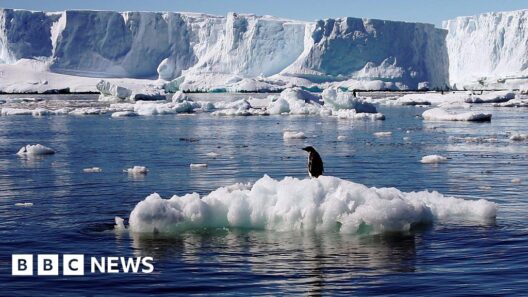As we rise each day, the sun casts its golden light upon a planet teeming with life. Yet, lurking beneath this idyllic visage is a tempest—a malady that has taken root in the very fabric of our atmosphere. Global warming, the catalyst of climate change, threatens to unravel the intricate tapestry of ecosystems that sustain us. However, within the shadow of despair lies an ember of hope. Can we reverse global warming? The answer, steeped in scientific inquiry and relentless innovation, is both complex and tantalizing.
Firstly, to grasp the possibility of reversing global warming, we must delve into the science that underpins it. The greenhouse effect—nature’s own exquisite balancing act—has been disrupted by anthropogenic activities. The burning of fossil fuels, deforestation, and industrial processes release copious amounts of greenhouse gases, notably carbon dioxide and methane. These gases envelop our planet, creating an insulative blanket that traps heat. Consequently, global temperatures rise, ushering in an era of climatic turmoil.
Yet, the narrative is not entirely bleak. While the situation is dire, pioneering research and advancements in environmental science forge pathways toward mitigation and potential reversal of these detrimental trends. One key realm of innovation is carbon dioxide removal (CDR). This encompasses strategies aimed at extracting CO2 from the atmosphere, akin to removing the poison that has seeped into a well. Techniques such as afforestation—planting trees on a massive scale—act as nature’s lungs, absorbing CO2 and releasing oxygen in return.
Moreover, engineered solutions, such as direct air capture (DAC), epitomize human ingenuity. Utilizing advanced technology, DAC facilities employ large fans to draw in air, filtering out carbon dioxide through a series of chemical reactions. The captured CO2 can then be sequestered underground or repurposed for various industrial processes. Imagine a factory that transforms toxic emissions into building materials, forging a greener future from the very remnants of our past mistakes.
In conjunction with CDR, we must also champion renewable energy sources as vital players in this revitalization effort. Solar, wind, and hydroelectric power represent the harbingers of an energy renaissance. By transitioning away from fossil fuels, we can significantly curtail emissions and alleviate pressures on our climate. Picture a world where rooftops glisten with solar panels, harnessing the sun’s energy; where fields dance with wind turbines, generating clean power; and where rivers and tides produce energy without depleting natural resources. These visions can materialize through collective will and concerted action.
Nevertheless, reversing global warming requires more than technological prowess; it necessitates a fundamental shift in societal values and behaviors. The metaphor of the ‘tipping point’ is apt here—a delicate balance where small changes can lead to monumental transformations. Just as a single seed can grow into a mighty oak, individual action can coalesce into a movement capable of restoring ecological equilibrium. Sustainable practices—such as minimizing waste, embracing local foods, and reducing car travel—must become integral to our daily lives.
A pivotal aspect of this transition is education and advocacy. Knowledge serves as the cornerstone of action. By equipping individuals with an understanding of environmental issues, we can inspire them to engage with and advocate for change. Schools, communities, and organizations must champion environmental education, sowing the seeds of awareness that can burgeon into passionate advocacy. Engaging youth in hands-on environmental initiatives, such as community gardens or clean-up drives, fosters not only knowledge but also a profound connection to their surroundings.
Additionally, robust policy frameworks must underpin these grassroots efforts, acting as scaffolding that supports the broader architecture of climate action. Governments around the globe possess the power to enact legislation that prioritizes sustainability—tax incentives for green technologies, stricter regulations on emissions, and funding for research and development in climate science are all formidable tools in the arsenal against global warming. But political will is fickle and often vulnerable to the influence of powerful lobbying entities. Therefore, citizens must remain vigilant, advocating for policies that resonate with the urgency of the climate crisis.
The global community’s response to climate change must be collaborative, transcending national boundaries to forge a unified approach. International agreements, such as the Paris Accord, exemplify the recognition that climate change is an existential threat demanding collective action. Diverse nations, each with unique challenges and capacities, must share knowledge and resources to create a tapestry of solutions that address regional and global needs. The climate crisis is not merely an environmental issue; it intersects with social justice, economic stability, and public health, necessitating a holistic approach.
Finally, while the challenges ahead may appear insurmountable, the continuity of hope is essential. Just as a phoenix rises anew from its ashes, humanity has a remarkable capacity for resilience and adaptation. Reversing global warming may not be an instantaneous endeavor, but through persistent effort and unwavering commitment, a sustainable future can emerge. The scientific community continues to unveil innovative solutions, and the groundswell of grassroots movements empowers individuals to act. United by a common purpose, we can transform despair into action, painting a future where our planet thrives once again.
In conclusion, the path to reversing global warming is fraught with challenges yet illuminated by the incandescent glow of hope. Through science, innovation, education, and policy, we hold the power to rewrite our future. The question is no longer if we can reverse global warming, but rather how swiftly we can mobilize our collective ingenuity and determination to do so. The time to act is now, for the earth beneath our feet is not merely a resource to exploit, but a home to protect and cherish.




